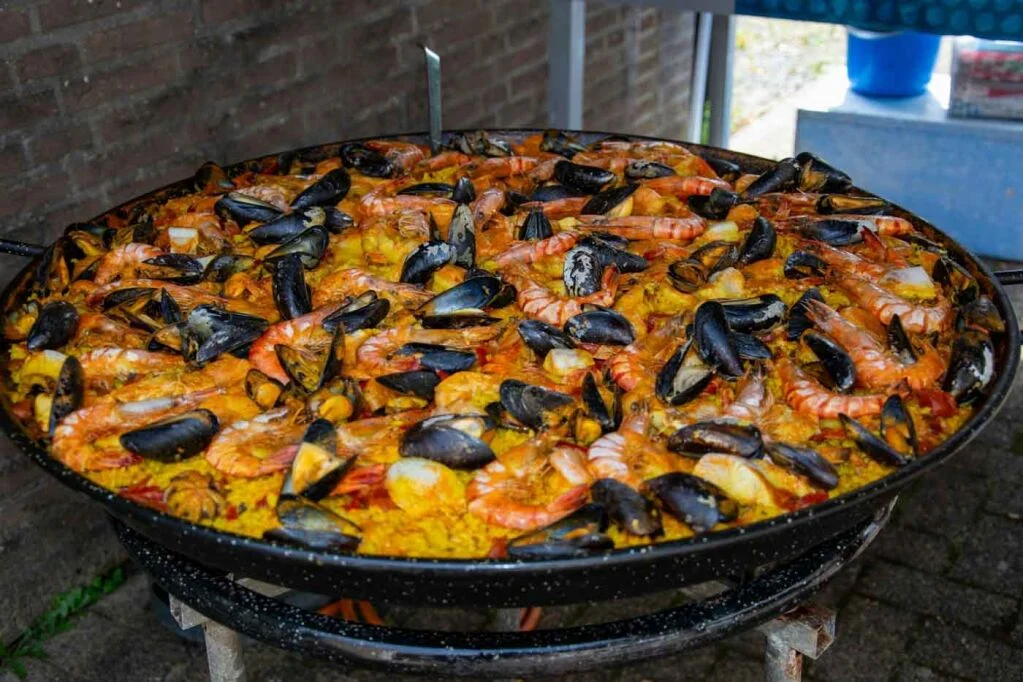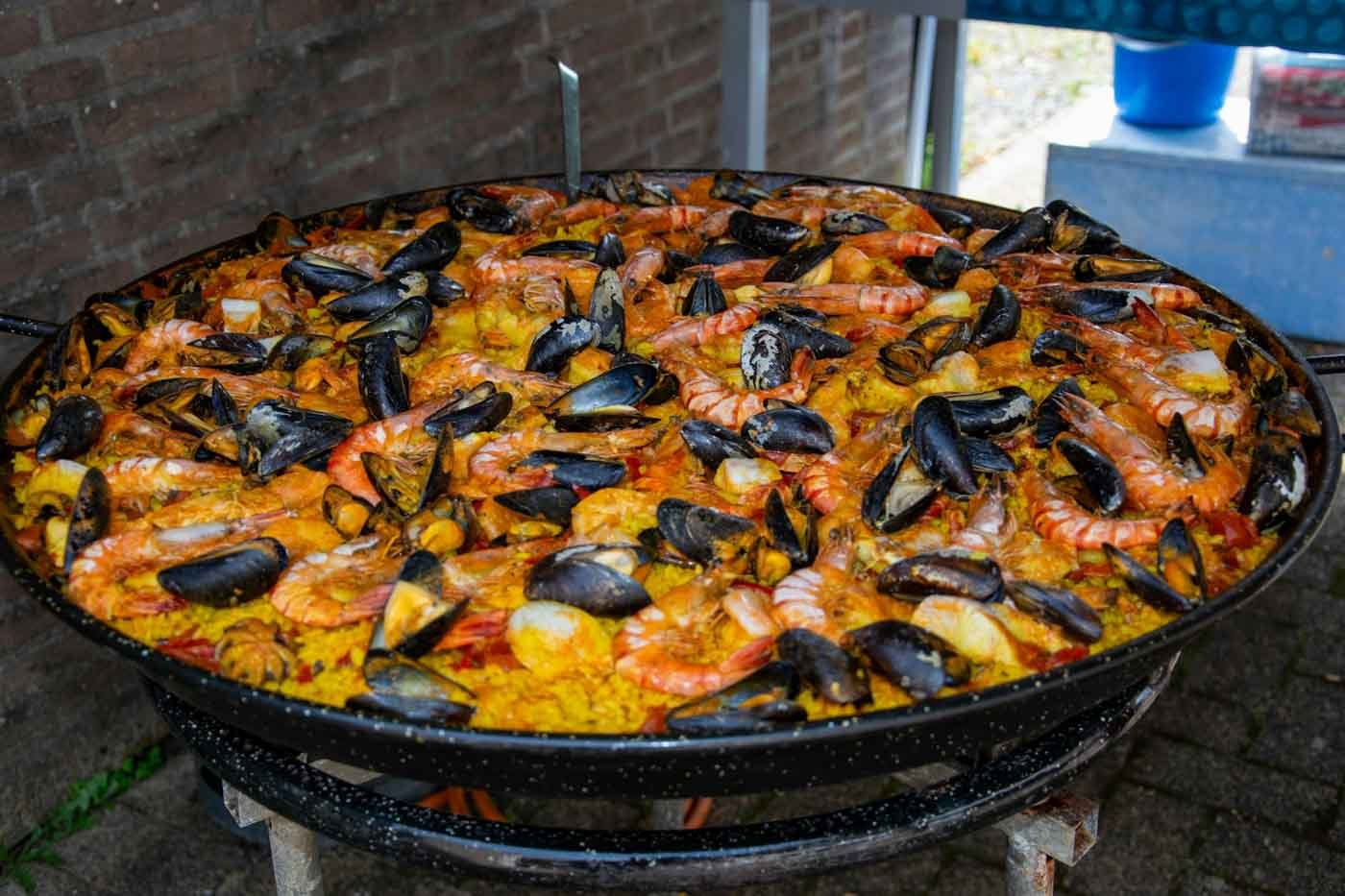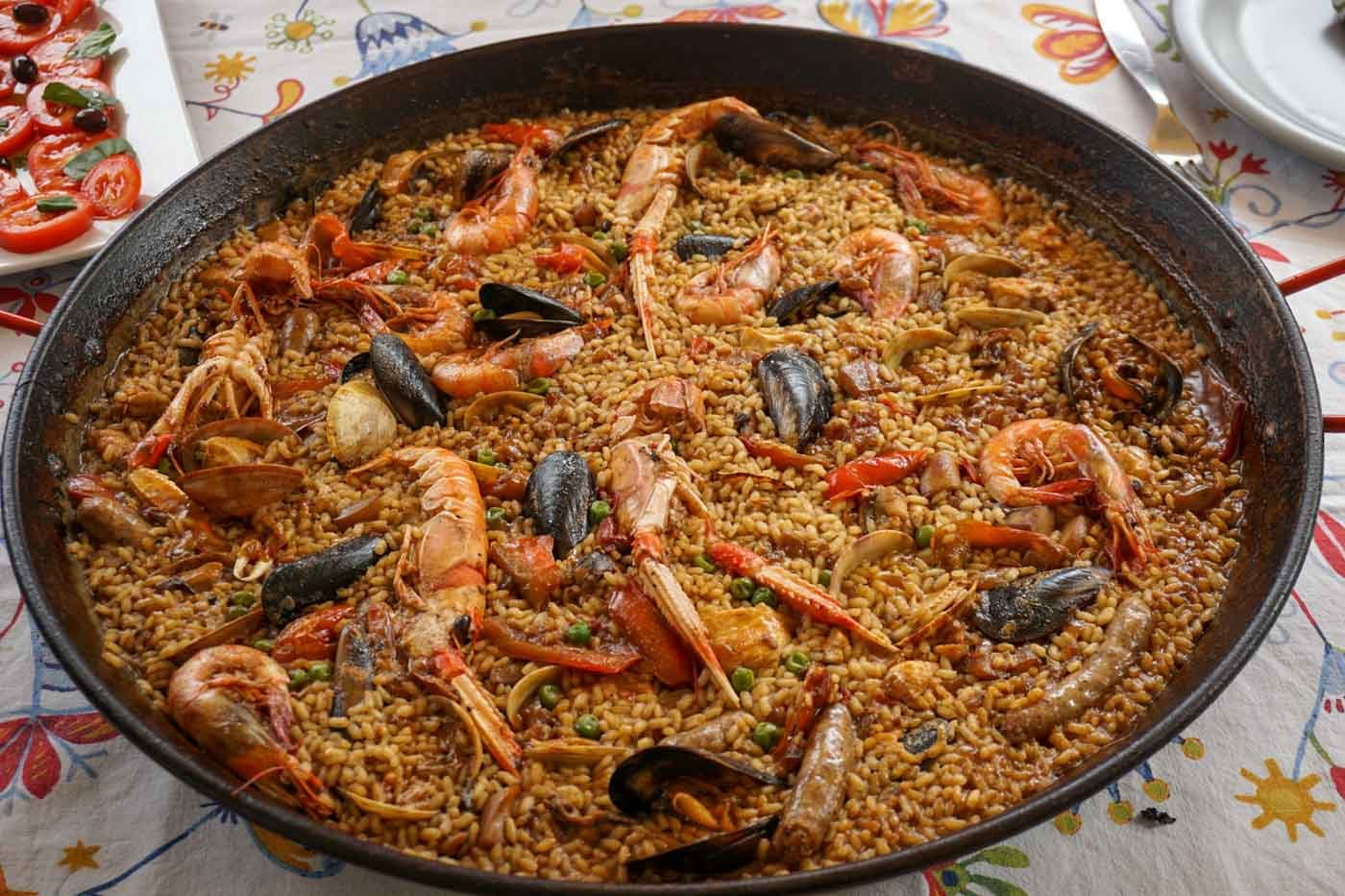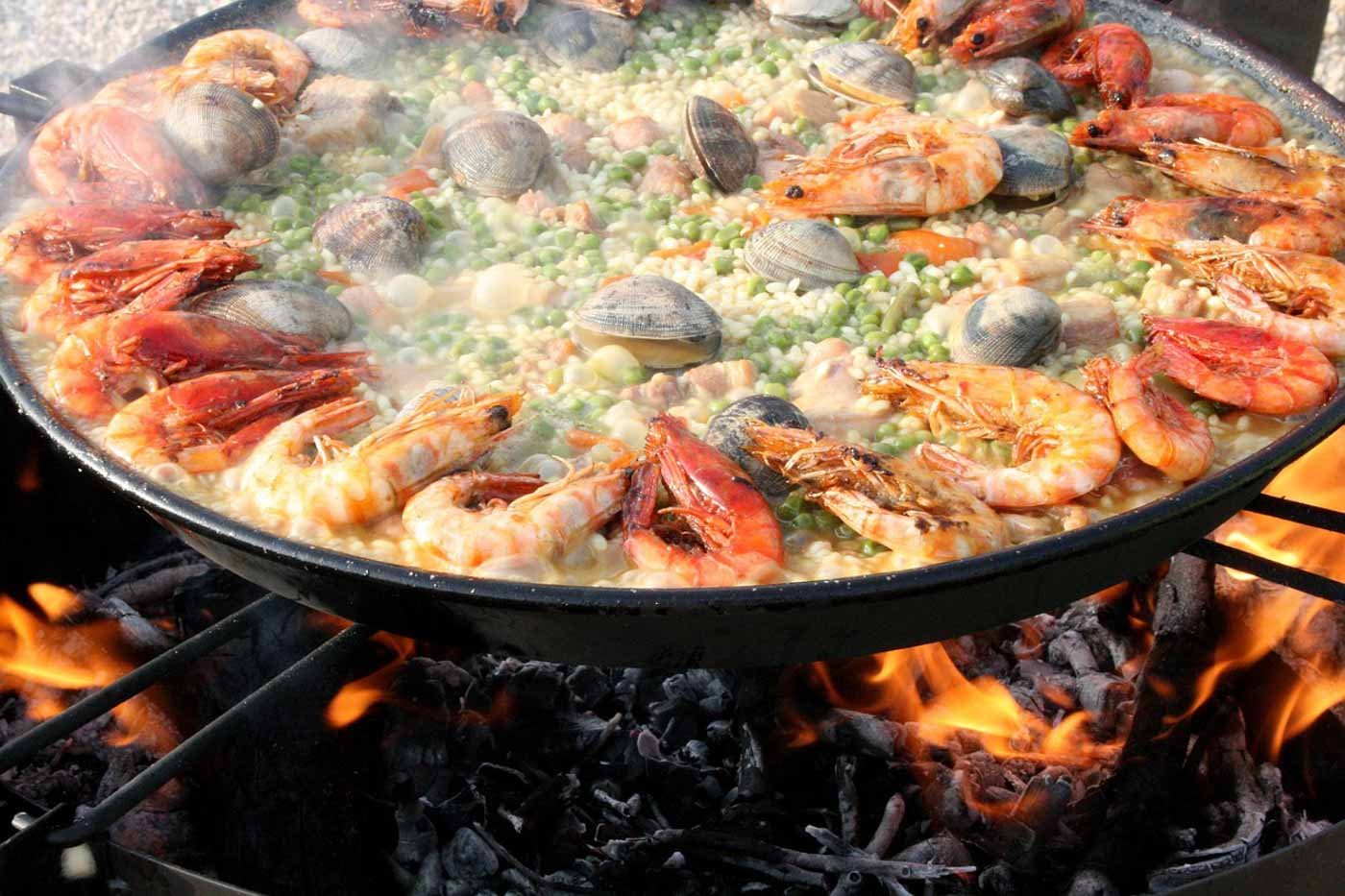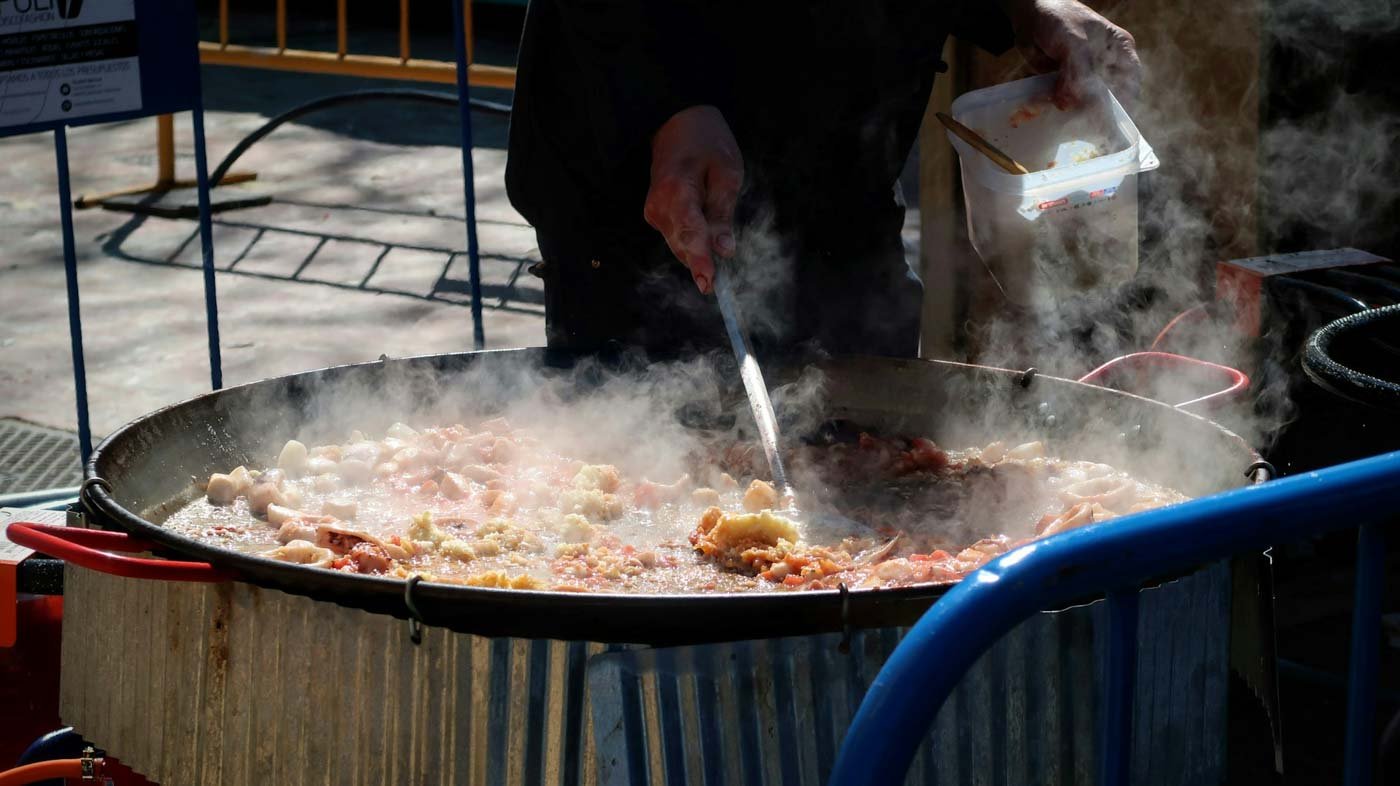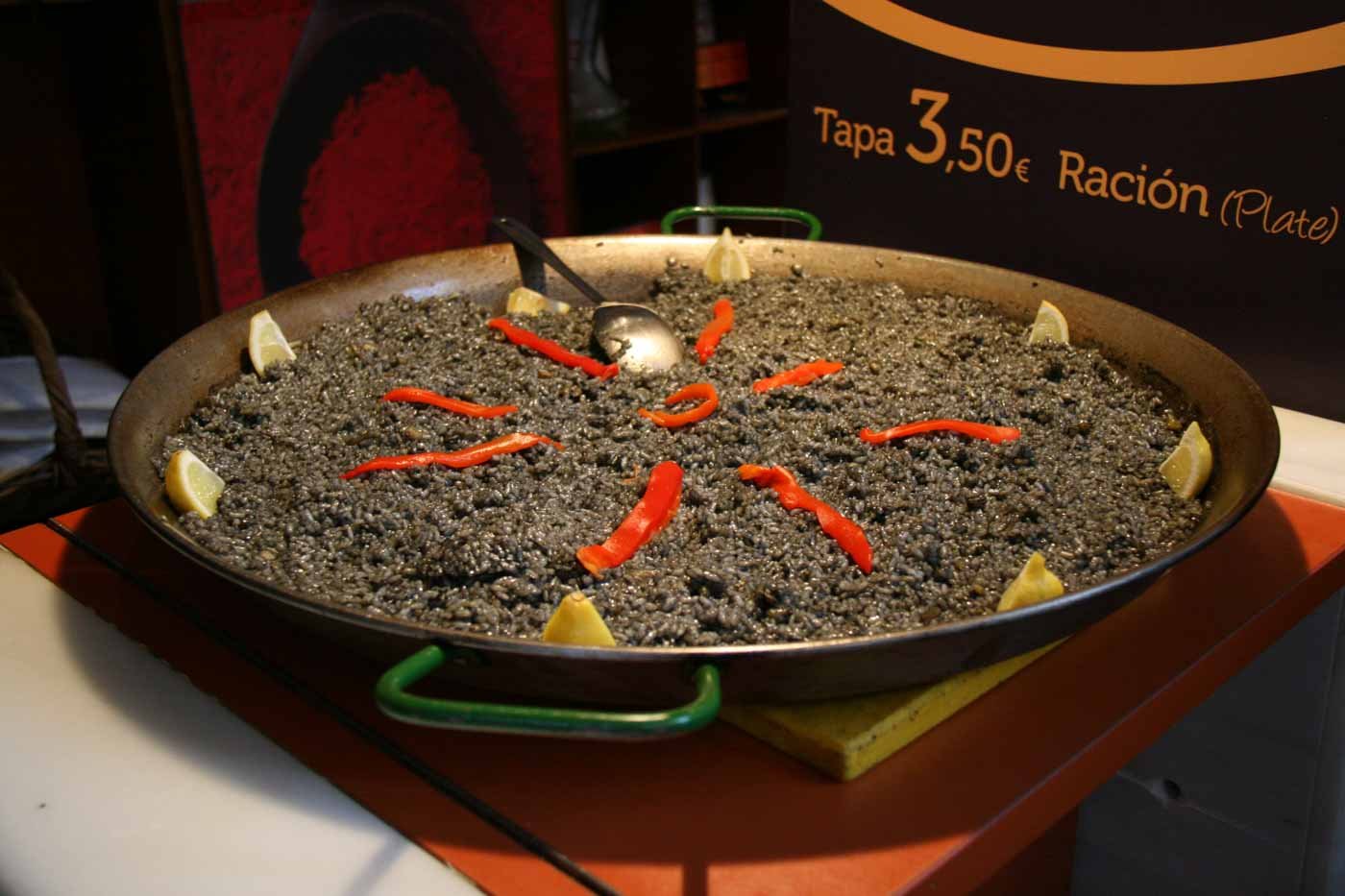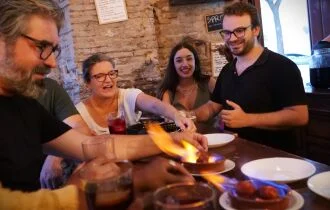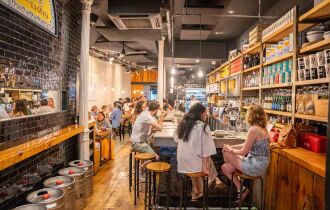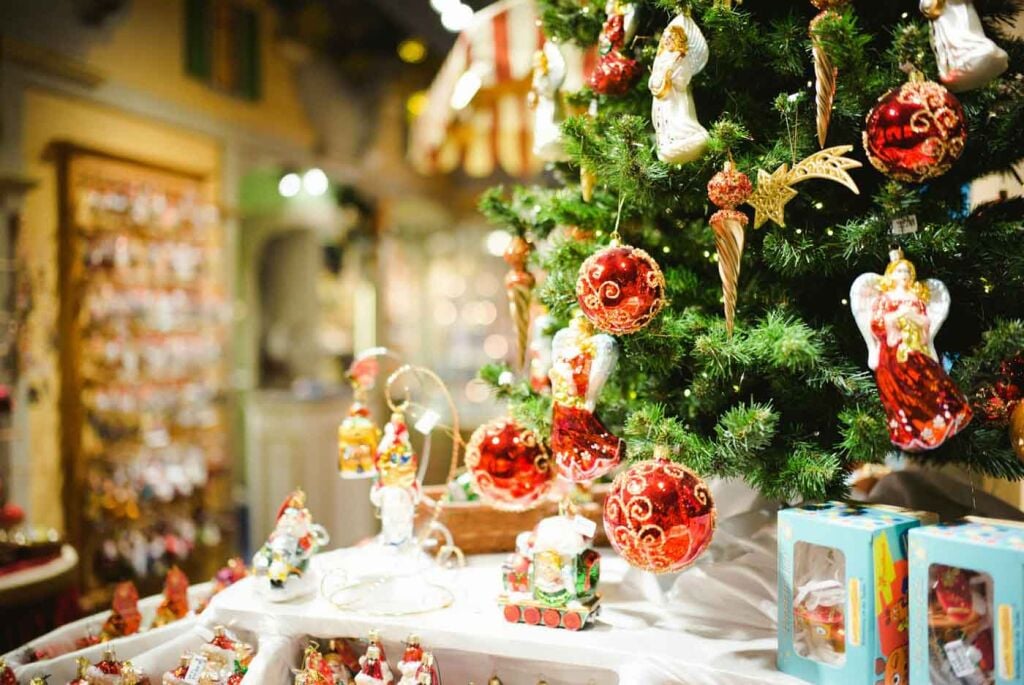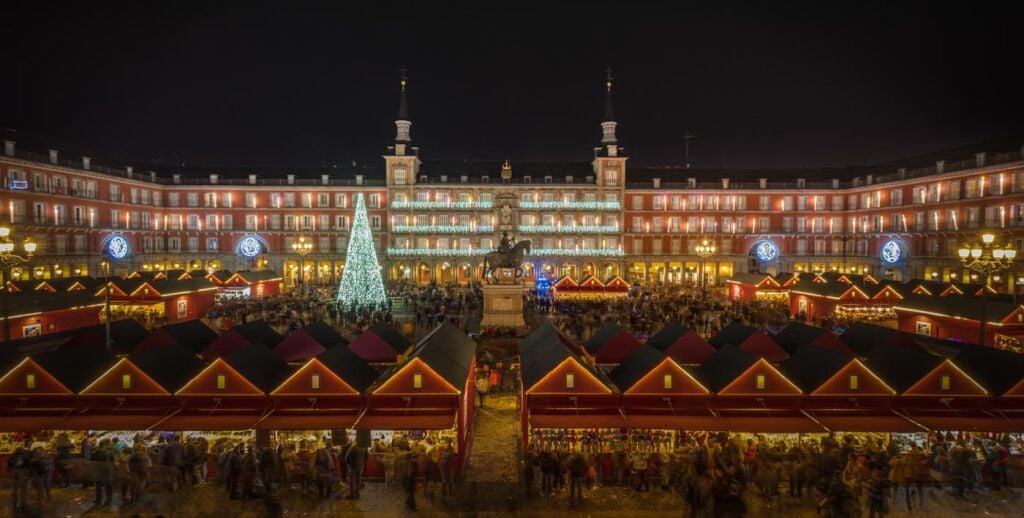The Andalusian spin on paella in Seville makes it distinctly different from paella in Valencia, yet both versions share many similar touchstone ingredients. The fact that you can get both types of paella in Seville, as well as some creative chef-inspired twists on this classic rice dish, makes it even more enduring.
Whether you’re enjoying a rustic Andalusian, classic Valencian-style, or internationally infused version, there are plenty of great paella spots to check out on a Spain food tour.
Traditional Origins and Regional Variations
Paella originated in Valencia, where it was traditionally cooked over an open fire and made with local ingredients like rabbit, chicken, snails, and seasonal vegetables. The word paella actually refers to the wide, shallow pan it’s cooked in.
However, “true” Valencian paella is defined by its specific combination of meats, green beans, saffron, and bomba rice. It’s a dish rooted in community and practicality, reflecting the flavors and resources of eastern Spain.
Over time paella made its way south to Andalusia where it evolved to reflect local tastes and ingredients. In Seville, you’ll often find seafood-based versions made with cuttlefish, mussels, and shrimp, as well as rice dishes infused with the region’s famed olive oil and seasonal produce like artichokes or peppers. Andalusian paellas are often more brothy or creamy, reflecting the region’s Moorish and Mediterranean influences.
Types of Paella You’ll Find in Seville
In Seville, you’ll find a delicious range of paella styles, each with its own flair.
Paella de marisco is a popular type of seafood paella loaded with shrimp, squid, and mussels.
Paella mixta combines both meat and seafood for a rich, hearty dish.
Paella de verduras has many vibrant vegetarian versions made with seasonal vegetables.
Photo credit: Wikimedia Commons licensed under Attribution-ShareAlike 3.0 Unported
Arroz negro is a striking black rice dish made with squid ink that gives the paella a shimmering black color.
The one thing all these versions of paella have in common is the socarrat, a golden, crispy layer of rice at the bottom of the pan.
How to Spot Authentic Paella
Spotting authentic paella in Seville starts with knowing what to look for. One major red flag is if the restaurant serves paella all day. In Seville a “true” paella takes time and is typically made fresh for lunch only.
Be wary of places using frozen seafood or instant rice, which compromise both texture and flavor. You’ll often see a phrase like “arroz del día” (rice of the day) or list paella with a minimum wait time. In Seville paella is a leisurely shared meal, so embrace the slower pace and skip the places that promise it in ten minutes.
It doesn’t hurt to ask if the rice is cooked fresh in the pan, rather than reheated, and whether they use local ingredients. Some inauthentic tourist restaurants use reheated and commercially sourced ingredients to save time, but compromise on quality.
Paella Etiquette and Dining Customs in Seville
In Seville, paella is a social ritual that also celebrates Andalusian ingredients. It’s typically served at lunchtime between 1:30 p.m. and 3:00 p.m. Paella is often reserved for weekends or special occasions, adding to its cultural significance.
Andalusian paella is served in the whole pan and is meant for sharing, making it a communal experience among family or friends. Locals usually order one type of paella for the whole table, and it’s common to eat directly from the pan in casual settings.
Where and When to Find Great Paella
A leisurely lunch in Seville’s Santa Cruz district is my favorite place to enjoy Andalusian-style paella. Its cobblestone streets, charming plazas, and long-established restaurants dedicated to authentic recipes make for a great paella experience.
If I want to enjoy paella with a more contemporary twist, I head to the Alameda de Hércules or Triana neighborhoods. Both are known for their vibrant food scenes and modern takes on traditional Andalusian fare.
Of course, in Seville, timing matters just as much as location, as paella is generally considered a lunch dish. The best paella restaurants only prepare it fresh for the midday meal. Especially on Sundays when people gather over a communal pan after services.
To truly experience great paella, seek out restaurants that cook it to order and display a clear connection to local traditions. With a little planning, you’ll enjoy paella the way Sevillanos do: fresh, flavorful, and with great company.
Tips for Enjoying Paella Like a Local
To enjoy paella like a local in Seville, it helps to plan ahead. It’s traditionally eaten at lunch, and you should avoid restaurants that advertise it for supper. Many of the best paella restaurants in Seville require a reservation, especially on weekends.
Don’t hesitate to ask your server if there’s a house special or seasonal variety that day. These are the most authentic and freshly made options.
While English is spoken in many tourist areas, learning a few key Spanish phrases like “cuál es la especialidad de la casa?” (What is the house specialty?) can go a long way.
Pair your paella with a crisp local white wine like Verdejo or a chilled glass of sangría. Since authentic paella takes time, consider ordering an appetizer like ordering olives, salmorejo, or grilled vegetables to round out your Andalusian dining experience.
Final Thoughts: Savoring Seville’s Signature Dish
Paella in Seville is a celebration of Andalusian culture, history, and community. Savoring this iconic dish is best done slowly and intentionally, allowing time to enjoy each bite, and sip of Andalusian wine, and connect you with the local culture and with those around you.
Whether you’re dining outdoors in a sun-drenched plaza or tucked into a lively neighborhood eatery, the act of sharing paella brings people together in a way that transcends food.
A Spain food tour gives you the opportunity to explore Seville’s vibrant culinary landscape and the deeper flavors of Andalusia. From the smoky notes of grilled seafood to the golden saffron hues of perfectly cooked rice, each pan tells a story.
Sources:
Eating Europe. (n.d.). Spain food tours. https://www.eatingeurope.com/spain/

